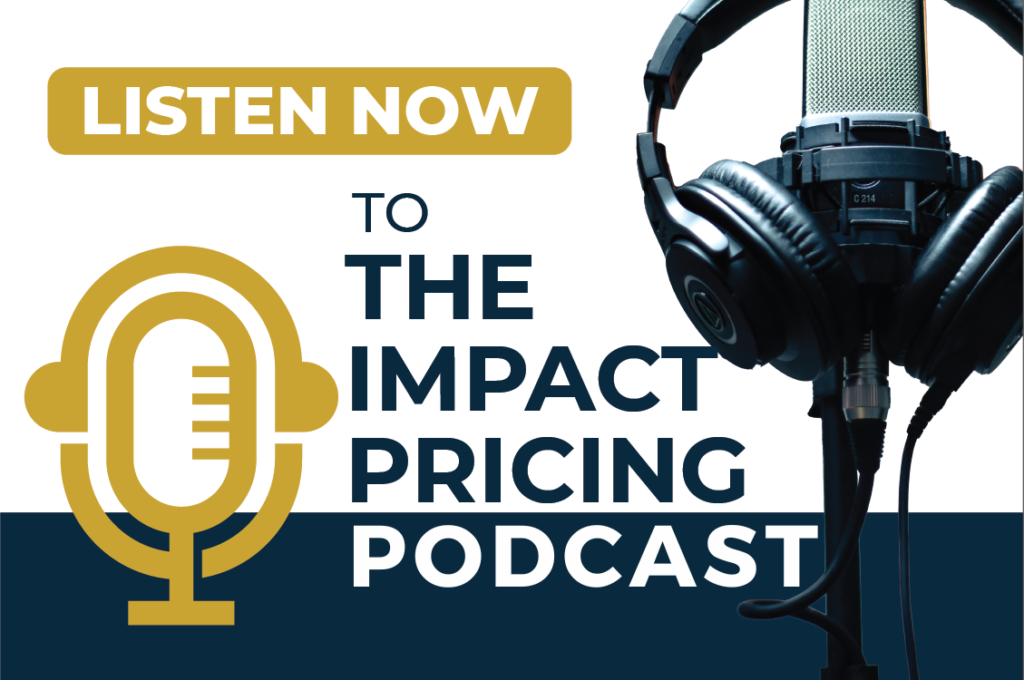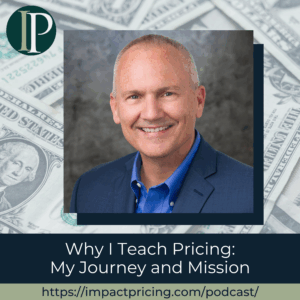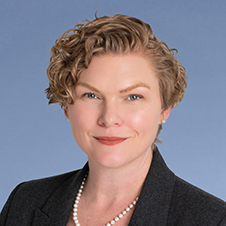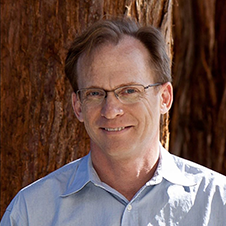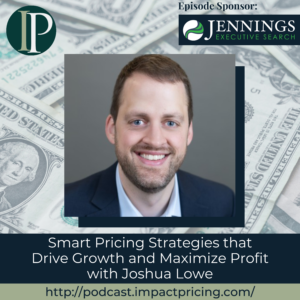
In this episode, Joshua discusses the evolution of pricing in the auto parts industry, explaining how his company is transitioning from traditional cost-plus pricing to more market-based and value-driven strategies. He highlights the role of data analytics and predictive modeling in optimizing pricing decisions while maintaining fairness and customer retention.
Podcast: Play in new window | Download
Why you have to check out today’s podcast:
- Learn how a major industry player is shifting from cost-plus pricing to market-based and value-based approaches.
- Discover how analytics and data science shape pricing strategies, ensuring competitiveness and profitability.
- Understand why leaving some value on the table fosters long-term customer relationships and repeat business.
“You’ve got more pricing power than you might realize.”
– Joshua Lowe
Topics Covered:
01:31 – Joshua describing his journey into pricing
02:55 – Clarifying that Napa Auto Parts is a wholly owned subsidiary of Genuine Parts Company and sharing why he has stayed with Napa Auto Parts
04:27 – How his pricing strategies not only capture value but also reinvest in growth and detailing his role in setting nationwide retail, wholesale, and resale pricing frameworks
06:37 – The evolution of market segmentation in pricing, highlighting shifts between regional and nationwide pricing models and the factors influencing those changes
08:53 – Explaining customer segmentation in pricing, emphasizing the importance of transaction data, value drivers, and willingness to pay
11:27 – Pricing strategies based on delivery distance, emphasizing relationship-based pricing over cost-to-serve
13:09 – Explaining product segmentation and how Napa Auto parts sources products
15:56 – How cost increases from suppliers generally flow through their own pricing
17:03 – The role of cost-plus pricing in the industry and its gradual shift toward market-based and value-based pricing
21:31 – How Napa Auto Parts structures pricing
24:59 – Joshua’s best pricing advice
Key Takeaways:
“There’s a lot of price moves that you use in pricing to extract value, but a lot of times too, you’re trying to figure out ways to reinvest those wins back into sales so that you can grow.” – Joshua Lowe
“You never try to extract a hundred percent of the value of any single transaction because you might actually start losing customer retention over time. You want to leave 10, 20% on the table. I’ve always kind of kept that in the back of my mind as we do certain activities of how we keep the fairness in play as we make pricing actions.” – Joshua Lowe
People/Resources Mentioned:
- Gates Corporation: https://www.gates.com/us/en.html
- Genuine Parts Company: https://www.genpt.com/
- Napa Auto Parts: https://www.napaonline.com/
Connect with Joshua Lowe:
Connect with Mark Stiving:
- LinkedIn: https://www.linkedin.com/in/stiving/
- Email: [email protected]
Full Interview Transcript
(Note: This transcript was created with an AI transcription service. Please forgive any transcription or grammatical errors. We probably sounded better in real life.)
Joshua Lowe
Understand that you’ve got more pricing power than you think you do.
[Intro / Ad]
Mark Stiving
Welcome to Impact Pricing, the podcast where we discuss pricing, value, and the attributable relationship between them. I’m Mark Stiving, and I run boot camps to help companies get paid more. Our guest today is Joshua Lowe, and here are three things you want to know about Joshua before we start. He is the senior director of price setting and analytics at Genuine Parts Company. He’s been there for 12 years. Oh my gosh. And he is the only person I know who went to U of Wyoming. Welcome, Josh.
Joshua Lowe
Thanks, Mark. Thanks for having me. And there’s not too many University of Wyoming grads out there, but happy to be a cowboy.
Mark Stiving
Yeah, exactly. So first question, how’d you get into pricing?
Joshua Lowe
Yeah, so coming out of my MBA program I joined Napa Auto Parts and a management trainee rotational program. So it was like an 18-month field-based training program where I saw Napa Auto Parts stores, Napa Auto Parts distribution centers, and spent stints in the sales part of the organization. So we’re like two thirds independently owned through a type of ownership we call Jobber. But it’s not a franchise model, it’s a distribution partner model. So I went through the rotational program for 18 months. Coming out of that, there was an opportunity for somebody with some technical skills to take over a division pricing role. And it was directly related to helping our independent owners try to maximize their profit. The basic framework of that is if our jobbers are healthy from a P&L perspective, they’ll buy more parts from us. So I took that role, nine plus 10 years ago. And that was my first foray into pricing. And I did that role for a number of years, went into supply chain management, and then found, ‘Hey, you know what? I’d rather be in a pricing role where I had more autonomy, I guess, to make decisions. I was more empowered in that role than I was in my supply chain role. So I went back into pricing and been there ever since.
Mark Stiving
Nice. So just so we all understand, first off, does Genuine Parts Company own Napa Auto Parts?
Joshua Lowe
Yeah, we’re a wholly owned subsidiary. So we’re the largest subsidiary of Genuine Parts Company. So we’re a United Napa Auto Parts United base of 6,000 stores nationwide.
Mark Stiving
Got it. And when you say the word jobber I can interpret that to mean owner of an independent Napa Auto Parts store?
Joshua Lowe
Exactly, yep.
Mark Stiving
Okay, perfect. And so I got to say, I think that it would be a lot of fun to run a pricing division whose job is to help stores be more successful.
Joshua Lowe
Yeah, I mean, honestly, that’s why I’ve been with Napa this long. I get the question every once in a while, ‘Hey, why have you been there for that long? You’ve got an MBA, you’ve moved up through the organization, why haven’t you moved out and found opportunities? And it’s always been helping the independent owner that has driven me back because it keeps me here. I guess it’s just, I’m working for a large corporation. A lot of people in pricing roles work for large corporations, but at the end of the day, a lot of what I do is I try to find those like win-win situations where it’s beneficial for us, it’s beneficial for them to create a lot of great relationships over the years with independent owners. So it’s definitely, it’s a unique part of the business and that’s why I’m still here.
Mark Stiving
Yeah. And I live in the world of pricing and I have to say that whenever you help, whenever I help a company, and I’m sure it’s true for you as well, but whenever I help a company with their pricing, they’re more successful. They’re much happier that we got this done. And we’re not cheating customers, their customers. What we’re really doing is just capturing more of the value that we’re delivering to our customers.
Joshua Lowe
Yeah, I look at it in an organization like ours where we have 800 plus thousand actively managed products, you’re unlikely getting the full basket of goods from your customers so you can extract, obviously there’s a lot of price moves that you use in pricing to extract value, but a lot of times too, you’re trying to figure out ways to reinvest those wins back into sales so that you can grow. So yeah, it’s, I would say, definitely in our organization, no negative connotation of the work that we’re doing. I think if anything it’s like you got to make money so that you can reinvest in the business, win more business and grow.
Mark Stiving
So what I’m hearing you say is that you help jobbers price products going out the Napa Auto Parts store, but do you also help Genuine Parts price the products going into the Napa Auto Parts store?
Joshua Lowe
Yeah, so that was my first role in pricing, was more the consultative work for our independent owners. Now, my role is basically, I do kind of what you just vocalized. I set both the price that we sell into our stores, and I set our recommended list prices that we sell out of the store. So I set a recommended retail price for Nationwide. I set a recommended wholesale price for Nationwide, and then I set a recommended list price, which is our resale price into our independent owners. And each one of those, we have like discount structures built off of them, but I set basically that primary framework for our products. So we’ve got those 850,000 products. And so my team that’s not really, it’s my team they’re the ones partnering with the category and trying to make sure that we’re achieving our goals. But those are the three things that we’re oriented around. Our retail list price, a wholesale list price, and then our resale price into our independent owners.
Mark Stiving
Nice. So this is going to be a great … I just wish I knew what you knew, right? I could just imagine this, this is going to be fun. So, what do you think about, let’s talk about price segmentation, but from a market segmentation perspective first, right? So how do you think of different market segments and charging different prices? Or do you
Joshua Lowe
Yeah, I would say it comes and goes by geography. Let’s talk like the obvious one first, which is typically like geographical-based pricing, regional-based pricing, like kind of that approach to pricing. So our industry has kind of ebb and flowed over time. So we used to have more regional-based pricing. Our competition hadn’t quite organized to like a national perspective, so you were fighting all these regional competitors. So you had regional-based pricing. And then over time our competition has all kind of grown to a national footprint. And what happened at a similar time was all of a sudden you had nationwide pricing. So we’ve seen it kind of swing back and forth over the course of the last probably 20 years in pricing. Obviously I’ve only been here for 12, but right now a lot of our retail prices are set almost nationwide for I would say the continental United States. And that matches kind of the expectations of our competition. We do see that starting to shift a little bit. we analyze that to see, ‘Hey, do we see some shifts happening over time where regional-based pricing is becoming more apparent?’
But we flexed in and out of that model twice in the 12 years I’ve been here. So regional is like the first way that we would look at market segmentation in general. You think of the south to the northwest and kind of having some kind of gradient of pricing that’s kind of aligned to, you could align it a bunch of different ways, right? You could look at average income in markets, you could look at willingness to pay in different markets. You could look at, you could try to measure affluence and vehicle types in different markets. So like all of those things we’ve kind of flexed in and out over time. I don’t know if that answers the question, Mark, but it’s been evolving of how you can look at how to price more across the United States. We do some things where we’re more focused now isn’t necessarily market segmentation as much as, and I guess this would lead to market segmentation, but focused on product segmentation, focused on customer segmentation. I guess you would take the cross of that to be a market. So that’s kind of where we’re at right now in our journey.
Mark Stiving
So when you think of the words customer segmentation, what are you thinking? Are you thinking things like income or is it something else?
Joshua Lowe
Yeah, I’d say this is and this isn’t probably unique to us, it’s very highly dependent. When you said the word attributable, this is my take on basically like customer segmentation. It’s what attributes do you have to drive up pricing relationships, you’ve got relationships, I’d say organizations kind of go through a few different journeys. You know stuff just by your sales master. Let’s start there. So you have transactions for your customer, you can mine that and back into some attributes basically like 10-year volume frequency. So you can do those kinds of things just based off your sales master. So that’s like step one where you would take segmentation on the customer level. Then you know that’s not necessarily willingness to pay. And I’d say most organizations are trying to figure out what willingness to pay is and willingness to pay is highly driven by what value your customers derive from your products and services.
So you need to enrich your attribution to help drive that. So you look at your value drivers, you try to build an attribute that is related to either product or customer. But so for us, like in our market, it’s not like price isn’t the primary driver of the sale typically. I mean, not that it’s not important, but we deal a lot with B2B business and it’s about how quickly you can deliver a part from a store to a garage. So are you able to move that product within 15 minutes, 30 minutes from your store to that garage? Because typically they’re trying to get a car turned around quickly. A car just broke, you got a customer on the other side, they need that product right away. So that’s some of the, like, we’re big on, you have the product available, how quickly can you get it to the consumer?
So you can start thinking of how you would use some of that to drive your customer attribution that you’ve used for pricing work over time. I wouldn’t say we’re quite there yet in all regards. And we’re doing some things that are kind of unique in that space. I won’t get into that all strategy work, but you can understand the picture, you look at your sales, you can tell stuff about your customers, then you start looking at the attribution you have for customers and you can tie stuff to regions, you can tie stuff to zip codes, whatever it is to try to make a decision of whether or not you see willingness to pay. And you can use all that to help drive prices.
Mark Stiving
Okay. So stupid question, really specific and feel free to say, Mark, I can’t answer that. You have two car repair shops. One is a 10-minute drive away and one is a 20-minute drive away. Do they get two different prices?
Joshua Lowe
I would say, I can’t really answer that, but I would say we would look at, this is more how we look at customers. We’re not really like a cost to serve pricing or like you would, you could do that. You could say, ‘Hey, my cost to serve a 20-minute away customer is more than my 10-minute away customer.’ We look at it this way, like, we want a partner with our best customers, whether they’re 20 minutes away or they’re 10 minutes away, and we want to make sure that we’re taking care of them and taking care of them isn’t necessarily charging them more. Because they’re 20 minutes away versus 10 minutes away. Like, we want good customer relationships. We want to earn their basket of goods. So we try to make sure the pricing helps convey that message regardless of distance.
Mark Stiving
I got to tell you, Josh, I would’ve priced it the other way that you’re thinking, right? It wasn’t the cost to serve, it was, ‘Oh, a 10-minute delivery is worth more than a 20-minute delivery.’ So therefore I’d charge the 10-minute guy more and the 20-minute guy less.
Joshua Lowe
You could take both sides to it, right? You’re able to offer better service to the guy that’s closer. But we look at it, I’d say the guy that’s close to you is giving you $50 a month, but the guy that’s further away is giving you $10,000 a month. Now you’ve got a different decision than the one we just talked about before.
Mark Stiving
Absolutely. There’s always other circumstances.
Joshua Lowe
Yeah, there’s always nuances, right? You can always argue both, both sides of any coin.
Mark Stiving
Yeah, no doubt. Okay, so, tell me about product segmentation. And I don’t think enough people talk or think about product segmentation. What do you think about that?
Joshua Lowe
Yeah, so product segmentation can go a ton of different ways with attribution too. Some things I would say is kind of driving logic through price and how this product segmentation just meet logic. So I meant, not that everybody would think the same way, but you can think of it as like logically you probably have lower margins on higher dollar products. A thousand dollar product probably has lower margins than a $1 product. So you could segment your products by price.
Mark Stiving
You mean, margin percentage.
Joshua Lowe
Margin percentage. Yeah. You’re probably not making 50, 75% margin on a thousand dollars product, but you might be making that on a $1 product, right? Just depends on what kind of business you’re in and certain businesses are even way more extreme than that. But, so you could segment your products that way. Other ways to think of it is like you can do more of like product lifecycle ideas of, is this a newly introduced product? Because typically things, if you just kind of think of marketing 101 typically things when they’re newly introduced to the market drive a little bit of a premium versus when they hit that peak demand in their life, prices and margins typically kind of go down, but hopefully you’re trying to maximize profits and then eventually they reach kind of the end of their product life cycle. And that can in a lot of organizations like clearance activity, right? So you can think of its products and segment new products over the product life cycle. We’ve actually come up with close to like 50 different product attributes that some of them we use, some we don’t. We’re just always trying to figure out what’s the right way to analyze the products to drive maximum profit in the organization. So I’d say there’s just tons. And once you start thinking about it and you start really dissecting your products there’s a lot of different ways that you could try to go about solving that problem.
Mark Stiving
How do you guys get products in the first place? Do you manufacture your own or are you getting it from suppliers?
Joshua Lowe
Yeah, we’re a supplier-based organization. Some of that stuff is direct source, some of that we work with name brands. So we have some really long standing relationships with organizations like Gates for belts and hose. That’s not something that we directly source. We source it through them. Then other products will go directly to the manufacturer and bring that into our supply chain.
Mark Stiving
Okay. And now, I hate asking this question, but how much do costs impact your pricing? So if a supplier raises their price by 10%, does that automatically flow through to your price?
Joshua Lowe
I would say, I mean, we’re always very conscious of managing that. The industry in general passes on most of the cost to price at time of cost increase. So it’s just, you can watch our competitors move just like they can watch us move through web scraping tools and stuff like that. So I’d say the industry and in part our products are, we make model specific, a lot of them. So the elasticity of that is kind of interesting to even conceptualize because the part has to break somewhere. So it’s not like we don’t sell a ton of nice to have products. We must have products. So there’s just more willingness to, as an entire industry, to not overthink the decision. I would say, like you had a price increase, you do your best to negate through good procurement activities, but once you’ve accepted, we’re typically, we have a certain strategy in place, which I won’t get into, but we do our best job of making sure that those prices are realized through our multi-channel distribution.
Mark Stiving
Okay. So I want to point out that I rally against cost-plus pricing a lot. But there are times when you have to do cost-plus pricing, but you can do it in a really modified version, which is I think probably what you guys are doing, given the conversation that we’re having, which is, ‘Hey, here’s a set of product attributes and because of this set of product attributes, these guys get, I’m just going to make up a number, I have no clue if it’s even close. These products get 30% margin and these other products over here with a different set of attributes get 25% margin.’ And so when costs change, of course prices change because we’re doing the margin calculations, not the, we’re not going out to a customer and saying, how much are you willing to pay for this specific part?
Joshua Lowe
Yeah, I’d say, let me talk a little higher level than maybe at the granular level of how product segmentation influences price. But a little bit more broadly. I’ll just talk about cost plus pricing and where it sure plays in our organization. So I look at it this way, I’ll take it back to the industry. The industry moved away from cost-plus pricing on a large part of the assortment in the last 10 years. So I wouldn’t say, we’re not the large, like, I’d say the whoever’s largest can kind of dictate a little bit of the work of the rest of the industry. We’re amongst the top three four depending on how you look at what channel and you know exactly where our influence is. But the industry moved away in a large regard to cost-plus pricing a while ago. So we still have cost plus pricing in certain parts of our assortment. Some of the stuff that is less actively managed, I would say. I think the things that you start more actively managed just by trying to balance other needs of the organization. You move away from cost-plus pricing over time. So, we still do that every day. Now, during a cost increase event, you might take some decisions of how much of that you just move margin neutral based on what your margin was before. But that doesn’t necessarily mean that your margin before was cost-plus.
Mark Stiving
Right, understood. And how many parts do you have?
Joshua Lowe
About 850,000 catalog SKUs.
Mark Stiving
And so that’s what drives me to think that this is some kind of cost-plus pricing. Because there’s no way you’d do willingness to pay.
Joshua Lowe
Yeah, exactly. Exactly. I’d say there’s both sides of the coin. Like there’s definitely, I would say, there’s still heavy influence from cost-plus pricing that this industry was built on for 30 years and now moving, trying to move to market-based and then value-based pricing. So I think as you go through that, you just see your model change a little bit where not everything’s cost-plus. You’re still fighting kind of the old cost-plus pricing that you had, and it’s slowly turning. So I would say that’s like, that’s what happens. It slowly shapes a little further away from cost-plus pricing. There are certain things, though, like, because of our multi-channel distribution, like our independent owners aren’t willing to sell products at 1% margins. We don’t use a lot of, we’re not a grocery store. We don’t have a whole lot of loss leaders. we’re not selling bananas below cost or something like that to get people in the door. People are in our door because something broke. We either they’re used to coming to us or we’re the closest place or whatever it may be. So, we try to make well-balanced margin decisions on almost every transaction. There’s not a ton of like loss leader kind of mentality or something like that in our industry.
Mark Stiving
Right. You can imagine the jobber, the people that are running the stores, they’ve got a specific way that they want to make money and you teach them how to do it, but they still have a specific margin they have to make.
Joshua Lowe
Yep. We’re constantly reminded of their expectations of margin.
Mark Stiving
Do you guys run your own source because you mentioned independent… So you run your own?
Joshua Lowe
Yeah, about one third of our stores are company owned, two thirds independent. So you Like we own most of like the metropolitan areas or where we’re heavily focused and then kind of the less metropolitan areas or where you’ll find our independent owners.
Mark Stiving
Do you price all of your products at the Napa Auto Parts store, at your list prices, at your recommended list prices?
Joshua Lowe
No. There’s a whole, like at the B2B space, which is the majority of our business, there’s a whole discount structure off of our recommended wholesale price. So there’s a discount structure. It depends on the product line, but it might be 5, 10, 20% discounts. I know some people like to orient their business around a global list and then have huge discounts from the global list. We don’t organize our pricing off of a global list. We have a recommended more reasonable wholesale price and then discount from there. But yeah, I mean, there’s definitely discounts in place in our business model.
Mark Stiving
Nice. Talk to me a little bit about data analytics, if you would. How many analysts do you have and how do you give them instructions? What do you ask them to do for you?
Joshua Lowe
In pricing in general in our organization, I would say we have four analysts or senior analysts that are really data heavy. We have a data scientist, two leads that kind of drive some larger decisions of how we use data to make decisions. So we probably have half a dozen or more people, full-time, dedicated to really trying to figure out with data and the analytics and how to drive us into a more modern future. I’d say, this is how I look at it. We’ve got IT analytics teams that are really trying to understand what we’re doing here and now and did the previous decision make sense. Like did it hit our KPI targets, so monitoring performance, I would say is a large part of our analytics. And then we have a lot of ways that we want to keep on progressing and modernizing in our approach. And so we’ve got teams organized around that too, of, ‘Hey, let’s keep an eye on the future. Let’s figure out what the most recent data science approaches to some of the topics that we’ve already discussed. Whether it was customer product segmentation and willingness to pay. And how do organizations try to extract more value over time?’ I’ve been to a lot of different conferences and I liked one, I can’t remember. So whoever said this, just ping me later and let me know it’s you. But an individual is basically like, your goal is always to leave value on the table for the customer so that you have that repeat business. You never try to extract a hundred percent of the value of any single transaction because you might actually start losing customer retention over time. You want to leave 10, 20% on the table. So I’ve always kind of kept that in the back of my mind as we do certain activities. How do we keep fairness in play as we make pricing actions? But from an analytical standpoint it’s definitely we’ve got an eye on today and an eye on the future as to how I view analytics and its place in our business.
Mark Stiving
And so it sounds like you rely on the data scientists to say, here’s what the future looks like, or see if you can go figure out what the future looks like.
Joshua Lowe
Yeah. It is more organized that way. Trying to do different predictive models and then try to bring some of those to light and run tests like that’s kind of how we have it structured.
Mark Stiving
I find this fascinating. I thank you so much for sharing. I appreciate it. But let’s get to the last question. What is one piece of pricing advice you would give our listeners that you think could have a big impact on their business?
Joshua Lowe
Yeah, I mean, I think most people that have been pricing for a while understand that you’ve got more pricing power than you think you do. I think that’s what it comes down to, especially if you’re a part, I guess as part of a large established corporation. If you’re a small business and you’re trying to grow quickly, you probably don’t have as much pricing power as you wish you did. But once you run, we’re a hundred years in business this year as an organization, so, a lot of organizations have a long track record. They have various established customers doing most of their transacting, most of their business through. You’ve got more pricing power than you might realize.
Mark Stiving
I actually love that comment. And if I were to flip it around, I would say something like, we overestimate the power of pricing, or we overestimate how much customers consider price when they make a decision.
Joshua Lowe
Mark, I’m a hundred percent aligned to that. There’s more value in the transfer of your products or services to your customer than price alone. You’re not breaking out the customer value proposition very well if all you see on one side is price, and the other side is the customer. Like, you’re doing it wrong.
Mark Stiving
Yep. Awesome. Josh, thank you so much for your time today. If anybody wants to contact you, how can they do that?
Joshua Lowe
Just on LinkedIn. Just Joshua Lowe on LinkedIn.
Mark Stiving
Okay. Excellent. We’ll put a link to your URL in the show notes. And to our listeners, thank you for your time. If you enjoyed this, would you please leave us a rating and a review? And if you have any questions or comments about the podcast or if your company needs help getting paid more for the value you deliver, feel free to email me, [email protected]. Now, go make an impact!
[Ad / Outro]






